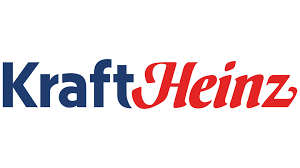It's 2 AM, and your third-shift supervisor is calling about a quality dispute. A major retailer claims that 15% of yesterday's shipment doesn't meet grade specifications. Your grading crew followed protocol, but now you're facing a $47,000 claim with no concrete data to defend you.
Sound familiar? If you still rely on manual grading systems, you're not just risking quality disputes. Your efficiency, accuracy, and profitability are taking a hit too.

Most processors know that manual grading is imperfect, but few realize what it costs. A good grading team might process 50,000 pounds per hour. With a 2% error rate, that means 1,000 pounds of misgraded product every single hour. Multiply that by seasonal peaks, and suddenly, you're looking at significant revenue leakage.
The real pain points hit hardest during harvest season:
Inconsistent grading standards between shifts and individual graders

Limited throughput capacity that creates processing bottlenecks

Lack of defensible data when quality disputes arise

Seasonal labor shortages that compromise grading accuracy

Manual certificate generation that delays shipments and creates compliance risks
More importantly, manual processes make it nearly impossible to identify quality trends.
When a grower’s fields produce higher defect rates, manual systems catch it too late. Thousands of pounds have already moved through your facility!
Our automated quality grading solution turns your line into a data-driven competitive advantage. Our system delivers USDA-compliant, defensible grading decisions at the speed your operation demands.


Our grading system identifies quality issues in real-time. When products from Grower Block 23A have elevated defect counts, you'll know immediately. Now you can adjust procedures, speak proactively with buyers, and prevent costly claims.
The system captures and analyzes multiple quality parameters simultaneously:





Manual grading creates a trade-off between speed and accuracy. Push for higher throughput, and quality suffers. Maintain strict quality standards, and your line crawls. Our automated solution eliminates this compromise entirely.
Process up to twice as fast during peak harvest without adding a single grader to your payroll.


Agricultural facilities aren't known for their love of complex technology, and for good reason. Too many "solutions" require complete system overhauls that disrupt operations for months.
ExtendAg's approach is different. Our grading solution integrates with your existing scale systems and ERP platforms. The transition occurs at a pace that suits you, until you're confident in the new process.
When quality or grower payment disputes arise, having the right documentation makes the difference between taking a loss and protecting your margins. Our automated certificate generation creates timestamped, photo-documented records for every lot that moves through your facility.
Each certificate includes detailed quality metrics, visual evidence, and full traceability. When a buyer questions quality, you respond with data, not explanations.
The grading system also maintains audit trails that satisfy FDA traceability requirements. During inspections, auditors see professional documentation that demonstrates consistent quality management.

Agricultural processors are rightfully skeptical of technology ROI claims. ExtendAg’s automated grading solution typically pays for itself within 12-18 months:
The most successful installations begin with a pilot implementation on a single grading line. This approach allows your team to learn the system, optimize settings, and prove ROI before scaling across all your facilities.
Ready to eliminate grading bottlenecks and reduce quality claim exposure? Our specialists can assess your current processes and develop an implementation plan that fits your unique requirements.
Automated grading is quickly becoming the standard in agricultural processing. Will you be an early adopter who gains a competitive advantage, or adopt late and play catch-up?
Join the growing number of fruit and vegetable processors that trust ExtendAg to strengthen and optimize their operations.
ExtendAg is the industry leading purpose-built solution for the complex needs of raw ingredient processors.
The specialty crop processors using our solutions include:









ExtendAg is part of Cultura Technologies, a growing collaborative of people, businesses and insights that enables better decisions to build a thriving and resilient agri-food system.
Alpharetta, GA
@ Cultura Technologies, LLC. All rights reserved.
Privacy Policy